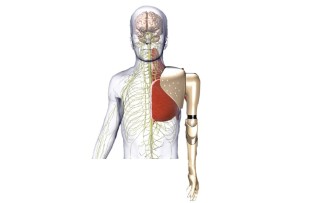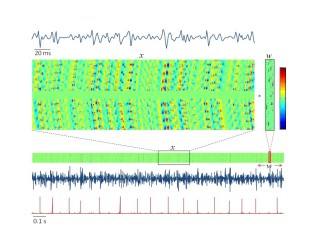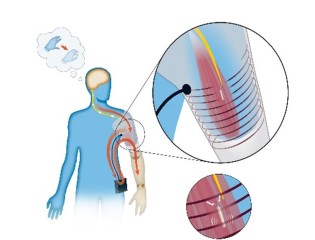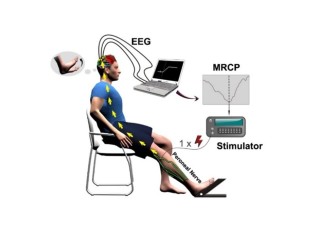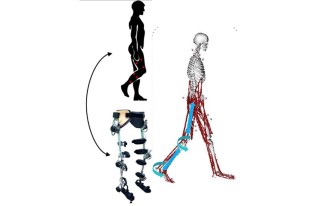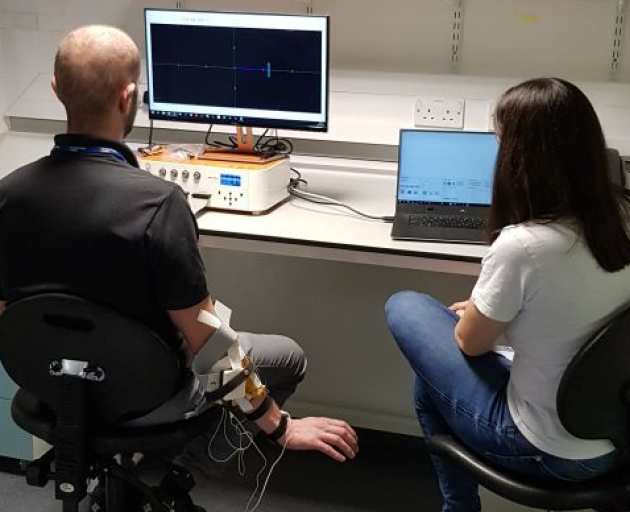 The research activities undertaken by Neuromechanics and Rehabilitation Technology group range from basic motor neuroscience to applications of the new knowledge acquired from basic studies into the design of neurotechnologies for motor rehabilitation. One of the main applied fields of our investigations is the development of human-machine interfaces for bionic limbs and exoskeletons.
The research activities undertaken by Neuromechanics and Rehabilitation Technology group range from basic motor neuroscience to applications of the new knowledge acquired from basic studies into the design of neurotechnologies for motor rehabilitation. One of the main applied fields of our investigations is the development of human-machine interfaces for bionic limbs and exoskeletons.
Our research primarily focuses on spinal motor neurons which are part of a very complex chain of processes in the neuromuscular system that is responsible for execution of movements. These movements are coded by the occurrence of discrete electrical events (i.e. action potentials) which are generated by the cells of neuromuscular system (i.e. neurons and muscle fibers). Spinal motor neurons are the final processing stage of the neural information as they directly send commands to muscle fibers for movement execution. Therefore, one of our main research areas is deciphering the activity of spinal motor neurons which provide an invaluable opportunity to understand fundamentals of movement generation physiology and pathology.
Within this context, our active research projects involves developing new signal processing methods, new electrodes, and hardware tools for observing the activity of motor neurons reliably. These form the basis of core neural interface platform technologies that are being developed in our group. Our research also focuses on developing advanced signal processing and control methods for advanced prosthetic limbs, exploiting the core neural-interface technologies we are developing. Advanced upper-limb prosthesis, lower-limb exoskeletons, and devices for tremor suppression are a few such examples.
Research topics
- Bionic Reconstruction
- Biosignal processing
- Neural Interfacing
- Neuromodulation
- Neuromuscular Physiology
- Restoration and Augmentation
